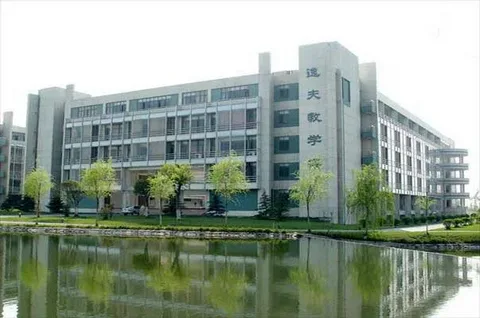Students researching PMDC A listed universities in China primarily look for verified recognition status, institutional reliability, and clarity on how MBBS programs align with licensing requirements in Pakistan. The essential starting point involves identifying universities that appear on the official PMDC list and confirming that their curriculum and hospital training standards meet the regulatory benchmarks required for future medical licensing.
Study sphere advisors shares these insights based on extensive experience guiding MBBS applicants toward recognized institutions across China. This content provides clear, structured information following an inverted pyramid format to help learners understand recognition criteria, academic structures, and critical decision-making factors without unnecessary complexity.
Understanding PMDC Recognition Standards
PMDC A listed universities maintain full recognition and comply with Pakistan’s prescribed medical education framework. Recognition reflects stability in academic delivery, strong teaching hospital affiliations, and measurable licensing exam performance among graduates. Students evaluating Chinese medical institutions benefit from examining these standards early in the decision-making process.
PMDC Evaluation Standards for A Listed Universities
| PMDC Evaluation Standard | Description |
| Curriculum Alignment | Must match PMDC Basic Medical Education Framework requirements |
| Teaching Infrastructure | Presence of advanced labs, anatomy facilities, and modern instructional tools |
| Clinical Rotation Network | Affiliated hospitals must meet minimum case-load and classification criteria |
| Licensing Track Record | Consistent graduate performance in NRE/PMC exams |
| Faculty Qualification Ratio | Sufficient number of senior faculty relative to enrolled students |
Bonus Tip: Focus on institutions with long-standing accreditation stability rather than newly listed programs.
PMDC A Listed Universities in China
These universities frequently appear on PMDC’s recognized list and consistently meet the academic and clinical standards required for Pakistani students. Recognition status may change, so verification through the latest PMDC publication remains essential.
Overview of PMDC A Listed Universities in China
|
University Name |
City | Key Strengths | Clinical Training Environment |
| Peking University Health Science Center | Beijing | Research-focused, advanced facilities | Tier-1 teaching hospitals |
| Fudan University (Shanghai Medical College) | Shanghai | Strong global standing | High-volume multi-specialty hospitals |
| Zhejiang University School of Medicine | Hangzhou | Interdisciplinary medical research | Modern clinical infrastructure |
| Wuhan University School of Medicine | Wuhan | Structured and stable MBBS program | Large affiliated hospitals |
| Xi’an Jiaotong University Health Science Center | Xi’an | Strong curriculum and faculty | Multiple Class-A hospital affiliations |
| Jilin University School of Medicine | Changchun | Large international cohort | Integrated public hospital rotations |
| China Medical University | Shenyang | Long-established medical education | Multi-hospital rotation system |
| Shandong University School of Medicine | Jinan | Balanced theoretical and practical exposure |
Tier-1 clinical facilities |
Market insights:
- QS Asia Rankings 2024 lists six of these universities among the top 100 medical institutions in Asia.
- China’s Ministry of Education reports over 80,000 international medical students in the country in 2023.
- WHO’s global medical directory includes all universities listed above.
Academic Structure and Training Conditions
PMDC A listed universities follow standardized MBBS structures emphasizing foundational sciences in early years and clinical rotations in later stages. Programs often adopt integrated teaching modules, simulation-based training, and early lab exposure.
Key elements observed through years of guiding students include:
- English-medium instruction in selected programs
- Early exposure to dissection labs and simulation facilities
- Rotations in Class-A tertiary hospitals with high patient volume
- Structured academic calendars with limited deviation
- City-specific climate considerations, especially in northern China where winters impact mobility
Bonus Tip: Students benefit from reviewing hospital case-load reports to assess real clinical exposure potential.
Things Students Should Review Before Selecting a University
Before finalizing a PMDC A listed university in China, informed students review:
- Stability of English-medium MBBS programs
- Faculty-to-student ratios in preclinical and clinical years
- Licensing exam outcomes among graduates
- Accommodation and campus safety in winter-intensive cities
- Visa documentation processes and local administrative requirements
- Availability of mentorship for international batches
- Distance between campus and affiliated hospitals
- Cultural and language environment of the host city
These factors influence long-term academic performance and the student’s ability to adjust to the medical learning environment in China.
Services Study sphere advisors Offers to Support Students
Study sphere advisors provides structured support only where necessary to assist students preparing for China-based MBBS pathways. The services listed below directly relate to the academic processes involved.
- Study Visa Assistance
Guidance on preparing academic and legal documents for Chinese student visa processing. - Student Visa File Preparation
Organizing educational records, health documents, and embassy requirements to ensure procedural compliance. - Business Visa Support
Advisory for individuals exploring non-academic travel or business engagement related to China. - Work Visa Advisory
Assistance for applicants transitioning toward work permits following academic completion.
Common Questions Applicants Ask Before Applying
How often does PMDC update its A list?
Updates vary but usually occur when universities undergo structural, regulatory, or academic reviews.
Do all listed universities teach the entire MBBS program in English?
No. Only selected programs provide full English-medium instruction, and availability may vary by year.
Is it necessary to learn basic Mandarin?
Basic Mandarin helps during clinical rotations where patient communication is required.
Are northern Chinese universities harder for students to adjust to?
Northern cities have extremely cold winters, which affects transportation and living arrangements during rotations.
Additional Long-Term Guidance for MBBS Students
How do Chinese teaching hospitals differ from Pakistani hospitals?
Chinese hospitals often have larger patient volumes and more advanced diagnostic technologies.
Is clinical training in China recognized internationally?
It is recognized for eligibility pathways, but each country requires its own licensing exam.
What influences MBBS success in China the most?
Consistent study discipline, attendance, and active participation in clinical rotations.
Can students switch universities mid-program?
Transfers are rare and depend on university policy and provincial education regulations.
Final Words
PMDC A listed universities in China maintain strong academic structures, recognized clinical training environments, and documented licensing pathways. Students who evaluate curriculum quality, hospital affiliations, language environment, and regulatory requirements make better decisions aligned with long-term career goals. Reviewing the factors outlined above provides a realistic framework for selecting the right institution.


Leave a Reply